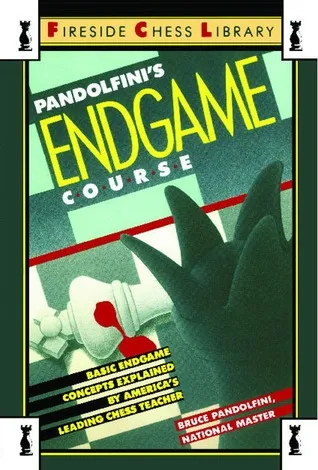Pandolfini's Endgame Course: Basic Endgame Concepts Explained by America's Leading Chess Teacher
By (author): "Bruce Pandolfini"

ISBN0671656880
ISBN139780671656881
AsinPandolfini's Endgame Course: Basic Endgame Concepts Explained by America's Leading Chess Teacher
Original titlePandolfini's Endgame Course: Basic Endgame Concepts Explained by America's Leading Chess Teacher (Fireside Chess Library)
The endgame has always been a particularly instructive phase of chess play. It provides the perfect opportunity for understanding the potential power of each chess piece in every chess situation-from opening move to checkmate. Yet unfortunately, the endgame is often viewed as an inaccessible area of play by average players whose experience is usually limited to watching championship games. Now Pandolfini's Endgame Course changes all that. Based on master teacher Pandolfini's private course for his students, this easy-to-use volume explains invaluable "inner circle" concepts and examples in a clear and entertaining format that allows any student with a basic knowledge of chess to enjoy endgame study-while also vastly improving every aspect of his or her chess play. With one endgame example per page and covering every endgame category in order of difficulty, Pandolfini walks the reader through all the basic endgame concepts. With a glossary of concepts and black-and-white diagrams throughout, this breakthrough volume is the not-so-secret password to a whole new realm of chess play and entertainment for the average player. Editorial Reviews These two works are as unalike as books about the same game can possibly be. Both are fine choices for their respective audiences. Pandolfini's, which uses algebraic notation throughout, is aimed at the beginning or intermediate player. It consists of 239 specific endgame positions, progressing from elementary endings to some subtle minor piece and pawn situations. Almost every example illustrates a specific principle, which is usually clearly stated. Since in many chess games, the choice of strategy is determined by the player's knowledge of what constitutes a winning endgame advantage, this is a valuable source of information. By contrast, Suetin's book, which uses the universal figurine, algebraic notation, is aimed at the more advanced club player who is trying to improve to expert or master status. Such players often find the